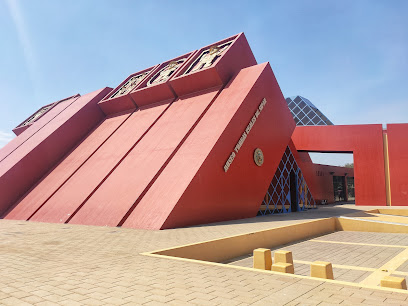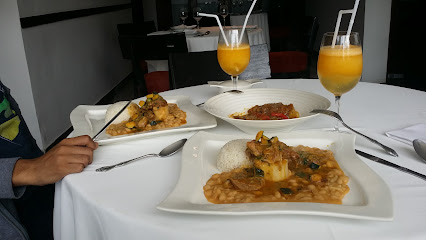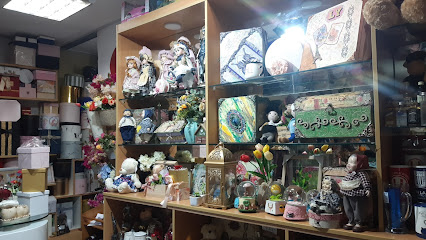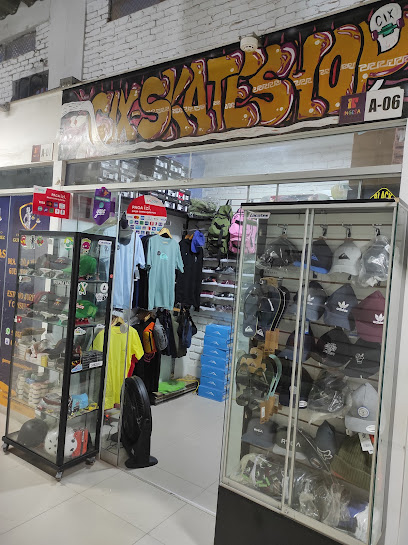
Chiclayo: The Pearl of the North
Discover Chiclayo, the Pearl of the North, where history, culture, and natural beauty come together to create an unforgettable Peruvian experience.
Chiclayo, known as the 'Pearl of the North,' is a city that offers a rich blend of history, culture, and natural beauty. Located on Peru's northern coast, Chiclayo is a destination that captivates with its vibrant markets, warm climate, and welcoming locals. The city is renowned for its archaeological treasures, including the famous Lord of Sipan tomb, which is one of the most important discoveries in the Americas. The Royal Tombs Museum in nearby Lambayeque showcases these artifacts, offering a fascinating glimpse into the ancient Moche civilization. For those interested in history, a visit to the Bruning Museum is also a must. Chiclayo's culinary scene is another highlight. The city is famous for its delicious seafood, particularly ceviche, which is a must-try for any visitor. The local markets, such as Mercado Modelo, are bustling with activity and offer a variety of fresh produce, local crafts, and traditional Peruvian dishes. Nature lovers will appreciate the Chaparrí Ecological Reserve, a short drive from the city. This reserve is home to a variety of wildlife, including the endangered spectacled bear. The reserve offers guided tours that provide insight into the region's unique flora and fauna. With its rich cultural heritage, delicious cuisine, and natural attractions, Chiclayo is a destination that offers something for everyone. Whether you're exploring ancient ruins, savoring local flavors, or enjoying the natural beauty, Chiclayo promises an unforgettable experience.
Local tips in Chiclayo
- Visit the Royal Tombs Museum early in the morning to avoid crowds and get the most out of your visit.
- Try the local ceviche at Mercado Modelo for an authentic taste of Chiclayo's culinary heritage.
- Bring sunscreen and a hat as Chiclayo enjoys a warm climate year-round.
- Hire a knowledgeable guide for your visit to the Chaparrí Ecological Reserve to enhance your experience.
- Learn a few basic Spanish phrases to help you navigate the markets and interact with locals.
Chiclayo: The Pearl of the North
Chiclayo, known as the 'Pearl of the North,' is a city that offers a rich blend of history, culture, and natural beauty. Located on Peru's northern coast, Chiclayo is a destination that captivates with its vibrant markets, warm climate, and welcoming locals. The city is renowned for its archaeological treasures, including the famous Lord of Sipan tomb, which is one of the most important discoveries in the Americas. The Royal Tombs Museum in nearby Lambayeque showcases these artifacts, offering a fascinating glimpse into the ancient Moche civilization. For those interested in history, a visit to the Bruning Museum is also a must. Chiclayo's culinary scene is another highlight. The city is famous for its delicious seafood, particularly ceviche, which is a must-try for any visitor. The local markets, such as Mercado Modelo, are bustling with activity and offer a variety of fresh produce, local crafts, and traditional Peruvian dishes. Nature lovers will appreciate the Chaparrí Ecological Reserve, a short drive from the city. This reserve is home to a variety of wildlife, including the endangered spectacled bear. The reserve offers guided tours that provide insight into the region's unique flora and fauna. With its rich cultural heritage, delicious cuisine, and natural attractions, Chiclayo is a destination that offers something for everyone. Whether you're exploring ancient ruins, savoring local flavors, or enjoying the natural beauty, Chiclayo promises an unforgettable experience.
When is the best time to go to Chiclayo?
Iconic landmarks you can’t miss
Main Square of Chiclayo
Explore the Main Square of Chiclayo, a vibrant park bustling with culture, history, and delightful local cuisine in the heart of Peru.

Royal Tombs Of Sipan Museum
Explore the Royal Tombs of Sipan Museum in Lambayeque, a captivating journey through ancient Moche civilization and its exquisite treasures.

Las Musas
Discover the tranquil beauty of Las Musas, a serene park in Chiclayo perfect for relaxation, picnics, and enjoying nature amidst the city's vibrant atmosphere.

Plazuela Elías Aguirre
Discover the vibrant Plazuela Elías Aguirre in Chiclayo, Peru, a perfect blend of culture, nature, and relaxation amidst the city's lively atmosphere.

PASEO YORTUQUE
Discover the enchanting blend of history, culture, and nature at Paseo Yortuque, a captivating park in La Victoria, Peru, perfect for all travelers.

WINMEIER HOTEL
Experience luxury and excitement at WINMEIER HOTEL, Chiclayo's premier hotel and casino, where comfort meets vibrant entertainment.

Hotel Costa del Sol Wyndham Chiclayo
Experience luxury and comfort at Hotel Costa del Sol Wyndham Chiclayo, your gateway to exploring the rich culture and history of Northern Peru.

Sicán National Museum
Explore the ancient Sicán civilization at the Sicán National Museum, a treasure trove of artifacts and rich cultural heritage in Peru.

Site Museum Huaca Rajada - Sipan
Explore the Site Museum Huaca Rajada in Sipan, where ancient Moche treasures reveal the rich history of Peru's past civilizations.

Playa Pimentel
Experience the vibrant culture, stunning beaches, and thrilling water sports at Playa Pimentel, a must-visit playground on the Peruvian coast.

Intiotel Chiclayo
Experience comfort and culture at Intiotel Chiclayo, ideally located for exploring the rich heritage of Peru's vibrant Chiclayo region.

Crisol Real Plaza Chiclayo
Explore the enchanting world of books at Crisol Real Plaza Chiclayo, a literary paradise for travelers and locals alike.

Municipality of Chiclayo
Explore the vibrant culture and history of Chiclayo at its municipal heart, a gateway to the rich traditions and attractions of northern Peru.

Crisol Mall Aventura Chiclayo
Explore Crisol Mall Aventura Chiclayo, the perfect literary escape for book lovers and travelers in the heart of Chiclayo.

La Huaca y el Huasimo
Discover the ancient wonders of La Huaca y el Huasimo in Chiclayo, Peru, where history and archaeology converge in a breathtaking landscape.

Unmissable attractions to see
Mercado Modelo de Chiclayo
Discover the heart of Chiclayo at Mercado Modelo, a vibrant market filled with local flavor, crafts, and cultural experiences that you won't want to miss.

Royal Tombs Of Sipan Museum
Discover the grandeur of ancient Peru at the Royal Tombs of Sipan Museum, showcasing exquisite artifacts from the Moche civilization.

PASEO YORTUQUE
Experience the beauty and history of Paseo Yortuque, La Victoria's urban oasis, perfect for relaxation, exploration, and cultural immersion.

Museo Arqueológico Nacional Brüning
Explore the rich archaeological heritage of Peru at the Museo Arqueológico Nacional Brüning, where ancient civilizations come to life through remarkable artifacts.

Tucume pyramids
Explore the ancient wonders of the Tucume Pyramids in Peru, an archaeological site rich in history and stunning landscapes.

Sicán National Museum
Uncover the ancient treasures of Peru at Sicán National Museum, where the captivating history of the Sicán culture comes to life through stunning artifacts.

Site Museum Huaca Rajada - Sipan
Discover the rich heritage of the Moche civilization at the Site Museum Huaca Rajada in Sipan, a captivating tourist attraction steeped in history.

Zoocriadero de aves gigantes
Explore the enchanting Zoocriadero de Aves Gigantes in Pimentel, a haven for giant bird species and a memorable experience for all nature lovers.

Provincial de la FAP Park
Discover the beauty and tranquility of Provincial de la FAP Park in Chiclayo, a perfect retreat for nature lovers and families alike.

Bosque de Pómac Historic Sanctuary
Explore the enchanting Bosque de Pómac Historic Sanctuary, a lush natural reserve rich in biodiversity and ancient history in José Leonardo Ortiz, Peru.

Museo de Sitio de Tucume
Explore the rich heritage of the Moche civilization at Museo de Sitio de Tucume, a must-see for history enthusiasts and curious travelers in Peru.

Parque artesanal de Monsefú
Explore the vibrant Parque Artesanal de Monsefú, a hub of authentic Peruvian handicrafts and a cultural treasure promising unique shopping experiences.

Huaca Ventarrón
Discover the ancient wonders of Huaca Ventarrón, a captivating archaeological site rich in history and breathtaking landscapes in Peru.

Sipán
Unearth the treasures of Sipán, an ancient Moche burial site in Peru, rich in history and archaeological wonders.

Essential places to dine
R Balta 512
Experience authentic Peruvian breakfast at R Balta 512 in Chiclayo - where traditional flavors meet welcoming hospitality.

CANNATA
Explore the flavors of Peru at CANNATA in Chiclayo – where every meal is a celebration of culinary excellence and local traditions.

900 Café Bar
Experience the best of Chiclayo's culinary scene at 900 Café Bar with its delightful fusion dishes and lively atmosphere.

Hebrón Restaurant & Grill
Discover authentic Peruvian flavors at Hebrón Restaurant & Grill in Chiclayo – where grilled meats meet local culinary traditions.

Restaurant La Parra
Discover the rich flavors of Peru at Restaurant La Parra in Chiclayo—where every dish tells a story.

El Boom
Discover the flavors of Peru at El Boom, Chiclayo's favorite restaurant offering authentic dishes at affordable prices.

Manos Piuranas
Experience authentic Peruvian cuisine at Manos Piuranas in Chiclayo - a culinary gem celebrating Creole flavors.

El Uruguayo
Experience the authentic taste of Peru at El Uruguayo in Chiclayo - where every meal is a celebration of flavor!

Fiesta Restaurant - Sede Chiclayo
Experience authentic Peruvian cuisine at Fiesta Restaurant in Chiclayo – where tradition meets flavor.

Caserío Restaurante Bar
Experience the essence of Peruvian cuisine at Chiclayo's upscale dining gem - Caserío Restaurante Bar.

Los Patos
Experience the authentic flavors of Peru at Los Patos in Chiclayo, where every dish tells a story of tradition and taste.

Mi Tía
Experience authentic Peruvian cuisine at Mi Tía in Chiclayo - where tradition meets taste in every delightful dish.

King Monkey
Savor the vibrant flavors of Peru at King Monkey Gastropub - where local ingredients meet global tastes in Chiclayo.

25 Horas Chiclayo
Experience the vibrant flavors of Peru at 25 Horas Chiclayo - a culinary gem in the heart of Chiclayo offering diverse dishes that delight every palate.

Restaurant Romanita
Experience the rich flavors of Peru at Restaurant Romanita in Chiclayo – where every meal tells a story.

Markets, malls and hidden boutiques
Boulevard
Discover Chiclayo's bustling Boulevard, a shopping paradise with diverse stores, delicious dining, and vibrant entertainment for every traveler.

Detalles Fashion Lunita
Discover unique Peruvian gifts at Detalles Fashion Lunita, Chiclayo's top gift shop featuring local artisan crafts and fashion accessories.

Freak Rock Store
Explore unique local fashion at Freak Rock Store in Chiclayo, where vibrant styles and friendly service await every visitor.

Carlysse Boutique | Vestidos de Novia y Fiesta | Chiclayo
Experience the allure of bridal elegance at Carlysse Boutique in Chiclayo, where every gown is a masterpiece of fashion design.

Tienda K-Pop ZKT STORE
Explore the heart of K-Pop culture at Tienda K-Pop ZKT STORE, Chiclayo's unique destination for stylish apparel and collectibles.

Artesania La Torre
Explore the vibrant craftsmanship of Peru at Artesania La Torre, your go-to destination for unique artistic handicrafts and souvenirs in Chiclayo.

Love Store
Explore Love Store in Chiclayo for unique Peruvian handicrafts and souvenirs that capture the essence of local culture.

BRISA BOUTIQUE
Explore Brisa Boutique in Chiclayo for unique Peruvian fashion and handcrafted treasures that capture the essence of local artistry and culture.

Detalles Cix Peru
Explore Detalles Cix Peru, a charming gift shop in Chiclayo, offering unique handcrafted souvenirs that embody the spirit of Peru.

Date Un Gusto
Discover Chiclayo's finest fashion accessories at Date Un Gusto – where style meets local craftsmanship.

Tely Diaz Casa DNovia
Tely Diaz Casa DNovia in Chiclayo offers exquisite bridal gowns and personalized service, ensuring every bride finds her dream dress.

IMPORTACIONES MIA BOUTIQUE PERU SAC BOUTIQUE CHICLAYO
Discover unique home goods and exquisite Peruvian craftsmanship at Importaciones Mia Boutique in Chiclayo.

Tienda Kpop Unnie Shop
Explore the vibrant world of K-Pop at Tienda Kpop Unnie Shop, Chiclayo's ultimate destination for music and fashion enthusiasts.

Ofertas Chiclayo
Discover Chiclayo's unique treasures at Ofertas Chiclayo, a boutique filled with artisanal crafts and stylish finds that embody local culture.

Cix SkateShop Chiclayo!
Experience the pulse of skate culture at Cix SkateShop Chiclayo, your one-stop destination for all things skateboarding.

Essential bars & hidden hideouts
Martini
Experience the vibrant nightlife at Martini, Chiclayo's premier bar for creative cocktails and a lively atmosphere.

King Monkey
Experience the heart of Chiclayo's culinary scene at King Monkey, where traditional Peruvian flavors meet innovative gastropub dining.

Estación Rock Chiclayo
Discover the soul of Chiclayo at Estación Rock, where music, culture, and great drinks come together in a lively bar atmosphere.

Karma Restobar
Experience the vibrant nightlife of Chiclayo at Karma Restobar, where delicious drinks and lively ambiance create unforgettable memories.

La Taberna Pub
Discover the lively spirit of Chiclayo at La Taberna Pub, where great drinks and friendly faces create unforgettable memories.

Viejo Lobo Lounge Bar
Savor the vibrant atmosphere and delicious grilled dishes at Viejo Lobo Lounge Bar, Chiclayo's premier destination for food and nightlife.

Barranquiito
Discover Barranquiito in Chiclayo, where vibrant nightlife meets authentic Peruvian flavors in a cozy bar atmosphere.

Seven Lounge Bar
Experience Chiclayo's vibrant nightlife at Seven Lounge Bar, where stylish ambiance meets exquisite cocktails and live entertainment.

D´Chill - bar y rest
Discover the lively atmosphere and unique cocktails at D´Chill - Bar y Rest, Chiclayo's ultimate destination for nightlife and social gatherings.

Barbol Bar
Discover Chiclayo's vibrant nightlife at Barbol Bar, a must-visit for cocktails and local culture in the heart of Peru.

Buen bar chiclayo
Experience Chiclayo's nightlife at Buen Bar, where local flavors meet vibrant atmosphere in a perfect blend of fun and relaxation.

Oasis Restobar & Full Fun Indoor
Experience the essence of Chiclayo at Oasis Restobar & Full Fun Indoor, where exceptional gastropub cuisine meets vibrant entertainment.

Rejitas bar
Experience the vibrant nightlife of Chiclayo at Rejitas Bar, where great drinks and a friendly atmosphere await.

BOHEMIUS- RESTO BAR
Discover the lively ambiance and taste of local flavors at BOHEMIUS - Resto Bar in Chiclayo, a must-visit destination for nightlife enthusiasts.

Weekend Resto - Bar
Experience the vibrant fusion of local flavors and nightlife at Weekend Resto - Bar in Chiclayo, the ultimate gastropub for foodies and social butterflies.

Local Phrases
-
- HelloHola
[oh-lah] - GoodbyeAdiós
[ah-dee-ohs] - YesSí
[see] - NoNo
[noh] - Please/You're welcomePor favor/De nada
[pohr fah-vohr/deh nah-dah] - Thank youGracias
[grah-see-ahs] - Excuse me/SorryPerdón/Lo siento
[pehr-dohn/loh see-ehn-toh] - How are you?¿Cómo estás?
[koh-moh ehs-tahs] - Fine. And you?Bien. ¿Y tú?
[byehn. ee too] - Do you speak English?¿Hablas inglés?
[ah-blahs een-glehs] - I don't understandNo entiendo
[noh ehn-tee-ehn-doh]
- HelloHola
-
- I'd like to see the menu, pleaseMe gustaría ver el menú, por favor
[meh goos-tah-ree-ah behr ehl meh-noo, pohr fah-vohr] - I don't eat meatNo como carne
[noh koh-moh kahr-neh] - Cheers!¡Salud!
[sah-lood] - I would like to pay, pleaseMe gustaría pagar, por favor
[meh goos-tah-ree-ah pah-gahr, pohr fah-vohr]
- I'd like to see the menu, pleaseMe gustaría ver el menú, por favor
-
- Help!¡Ayuda!
[ah-yoo-dah] - Go away!¡Vete!
[veh-teh] - Call the Police!¡Llama a la Policía!
[yah-mah ah lah poh-lee-see-ah] - Call a doctor!¡Llama a un médico!
[yah-mah ah oon meh-dee-koh] - I'm lostEstoy perdido
[ehs-toy pehr-dee-doh] - I'm illEstoy enfermo
[ehs-toy ehn-fehr-moh]
- Help!¡Ayuda!
-
- I'd like to buy...Me gustaría comprar...
[meh goos-tah-ree-ah kohm-prahr] - I'm just lookingSolo estoy mirando
[soh-loh ehs-toy mee-rahn-doh] - How much is it?¿Cuánto cuesta?
[kwan-toh kwehs-tah] - That's too expensiveEsto es demasiado caro
[ehs-toh ehs deh-mah-syah-doh kah-roh] - Can you lower the price?¿Puedes bajar el precio?
[pweh-dehs bah-hahr ehl pree-syoh]
- I'd like to buy...Me gustaría comprar...
-
- What time is it?¿Qué hora es?
[keh oh-rah ehs] - It's one o'clockEs la una
[ehs lah oo-nah] - Half past (10)Media (diez)
[meh-dee-ah (dyehs)] - MorningMañana
[mah-nyah-nah] - AfternoonTarde
[tahr-deh] - EveningNoche
[noh-cheh] - YesterdayAyer
[ah-yehr] - TodayHoy
[oy] - TomorrowMañana
[mah-nyah-nah] - 1Uno
[oo-noh] - 2Dos
[dohs] - 3Tres
[trehs] - 4Cuatro
[kwah-troh] - 5Cinco
[seen-koh] - 6Seis
[says] - 7Siete
[syeh-teh] - 8Ocho
[oh-choh] - 9Nueve
[nweh-veh] - 10Diez
[dyehs]
- What time is it?¿Qué hora es?
-
- Where's a/the...?¿Dónde está el/la...?
[dohn-deh ehs-tah ehl/lah] - What's the address?¿Cuál es la dirección?
[kwal ehs lah dee-rehk-syohn] - Can you show me (on the map)?¿Puedes mostrarme (en el mapa)?
[pweh-dehs mohs-trahr-meh (ehn ehl mah-pah)] - When's the next (bus)?¿Cuándo es el próximo (autobús)?
[kwan-doh ehs ehl proh-ksy-moh (ow-toh-booos)] - A ticket (to ....)Un boleto (a ....)
[oon boh-leh-toh (ah)]
- Where's a/the...?¿Dónde está el/la...?
History of Chiclayo
-
Long before the Inca Empire rose to prominence, the Moche civilization flourished in what is now northern Peru. One of the most significant archaeological discoveries in the region was the tomb of the Lord of Sipán, uncovered in 1987 near Chiclayo. The tomb, dating back to around 300 AD, revealed a wealth of artifacts, including gold, silver, and copper ornaments, as well as finely crafted ceramics. This discovery provided invaluable insights into the Moche culture and its intricate social and religious practices.
-
Following the decline of the Moche, the Lambayeque culture, also known as the Sicán civilization, emerged around 750 AD. The Sicán are renowned for their metallurgical skills and the construction of monumental adobe pyramids in the region. The most notable site is the Batán Grande complex, which includes the Huaca Loro pyramid. This civilization was instrumental in the development of the region's complex irrigation systems, which supported their agriculture-driven society.
-
In the 14th century, the Chimú Empire rose to dominance, encompassing much of northern Peru, including Chiclayo. The Chimú were known for their administrative prowess and sophisticated urban planning, with their capital at Chan Chan being the largest adobe city in the world. However, their reign was relatively short-lived, as they were conquered by the expanding Inca Empire in the late 15th century.
-
The arrival of the Spanish in the 16th century marked a significant turning point in the history of Chiclayo and the surrounding areas. The Spanish conquest led to the dismantling of the Inca administrative structure and the establishment of colonial towns. Chiclayo itself was officially founded in 1720 as a rural Indian village. Over time, it grew into a notable commercial hub, partly due to its strategic location near the Pacific coast and its connectivity with inland regions.
-
The War of the Pacific (1879-1884), fought between Chile and the allied forces of Peru and Bolivia, had significant ramifications for Chiclayo. The city played a crucial role as a logistical base for Peruvian troops. The war resulted in the loss of valuable territory for Peru, but Chiclayo continued to grow in importance as a commercial and transportation center in the aftermath of the conflict.
-
Today, Chiclayo is a bustling city known for its vibrant culture and historical significance. It serves as a gateway to numerous archaeological sites, museums, and cultural attractions that draw visitors from around the world. The city's modern growth is fueled by its agricultural bounty, commerce, and its status as a regional transport hub. Chiclayo's rich tapestry of history, from ancient civilizations to contemporary developments, makes it a fascinating destination for history enthusiasts and casual travelers alike.
Chiclayo Essentials
-
Chiclayo is located in the Lambayeque region of Peru. The nearest airport is Cap. FAP José A. Quiñones Gonzales International Airport (CIX), which serves both domestic and limited international flights. From Lima, you can catch a domestic flight to Chiclayo, which takes about 1.5 hours. Alternatively, you can take a long-distance bus from major Peruvian cities like Lima or Trujillo; the bus ride from Lima typically takes around 13 hours.
-
Chiclayo offers various modes of transportation, including taxis, mototaxis (motorcycle taxis), and buses. Taxis are relatively affordable and can be flagged down on the street or booked through apps. Mototaxis are a common and inexpensive way to travel short distances. Public buses and minibuses (combis) are available for local transit and are a cost-effective option for getting around the city. Car rental services are also available for those looking to explore the surrounding areas more independently.
-
The official currency in Peru is the Peruvian Sol (PEN). Credit and debit cards are widely accepted in hotels, restaurants, and major shops in Chiclayo. However, it is advisable to carry some cash for smaller establishments and markets. ATMs are readily available throughout the city, but it's wise to withdraw sufficient cash before venturing into more remote areas. Currency exchange services can be found at the airport, banks, and exchange houses.
-
Chiclayo is generally safe for tourists, but it's important to take standard precautions. Avoid walking alone at night, especially in poorly lit areas. Some neighborhoods to be cautious of include José Leonardo Ortiz and La Victoria, which have higher crime rates. Keep an eye on your belongings in crowded places like markets and bus terminals to avoid pickpocketing. Using registered taxis or ride-sharing apps is recommended for safer travel.
-
In case of emergency, dial 105 for the police, 116 for the fire department, and 117 for medical emergencies. Chiclayo has several hospitals and clinics, including Hospital Regional Lambayeque and Clínica Juan Pablo II. It is advisable to have travel insurance that covers medical emergencies. Pharmacies are available throughout the city for over-the-counter medications.
-
Fashion: Do dress modestly, especially when visiting religious sites. Avoid wearing overly revealing clothing. Religion: Do respect local customs and traditions. Always remove your hat when entering churches. Public Transport: Do be courteous and offer your seat to elderly passengers. Don't eat or drink on public buses. Greetings: Do greet people with a handshake or a polite nod. It's customary to say 'buenos días' (good morning) or 'buenas tardes' (good afternoon). Eating & Drinking: Do try local dishes like ceviche and arroz con pato. Don't refuse food if offered by locals, as it may be considered impolite.
-
To experience Chiclayo like a local, visit the Mercado Modelo, a bustling market where you can buy fresh produce, local crafts, and traditional Peruvian goods. Engage with locals, who are often friendly and eager to share their culture and traditions. Don't miss the chance to visit the nearby archaeological sites like Huaca Rajada and the Royal Tombs of Sipán Museum. For a unique experience, attend a traditional 'brujería' (witchcraft) market, where you can learn about local folklore and healing practices.
Trending Landmark in Chiclayo
-
Main Square of Chiclayo
-
Royal Tombs Of Sipan Museum
-
Las Musas
-
Plazuela Elías Aguirre
-
PASEO YORTUQUE
-
WINMEIER HOTEL
-
Hotel Costa del Sol Wyndham Chiclayo
-
Sicán National Museum
-
Site Museum Huaca Rajada - Sipan
-
Playa Pimentel
-
Intiotel Chiclayo
-
Crisol Real Plaza Chiclayo
-
Municipality of Chiclayo
-
Crisol Mall Aventura Chiclayo
-
La Huaca y el Huasimo
Nearby Cities to Chiclayo
-
Things To Do in Trujillo
-
Things To Do in Piura
-
Things To Do in Loja
-
Things To Do in Huaraz
-
Things To Do in Cuenca
-
Things To Do in Guayaquil
-
Things To Do in Salinas
-
Things To Do in Macas
-
Things To Do in Ambato
-
Things To Do in Manta
-
Things To Do in Lima
-
Things To Do in Tena
-
Things To Do in Quito
-
Things To Do in Mindo
-
Things To Do in Huancayo











